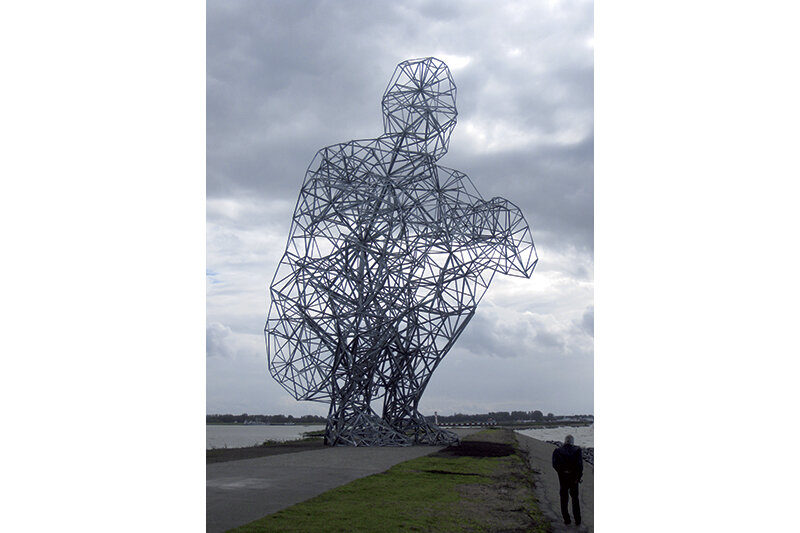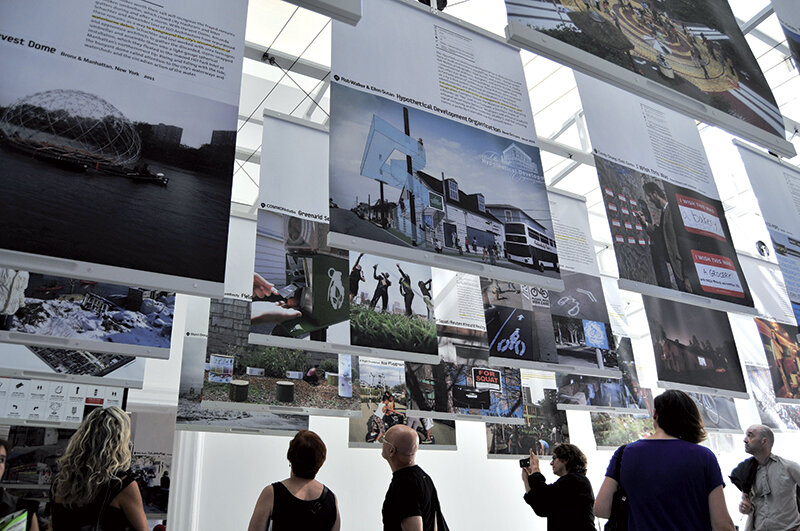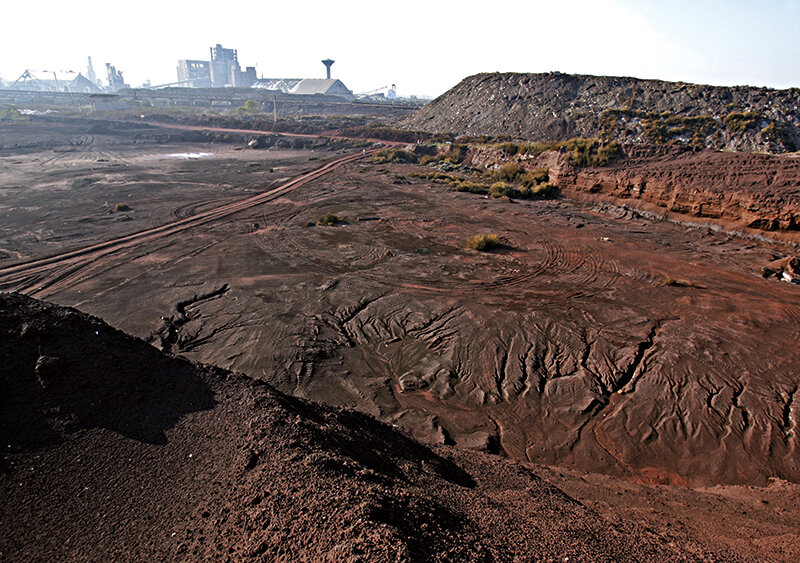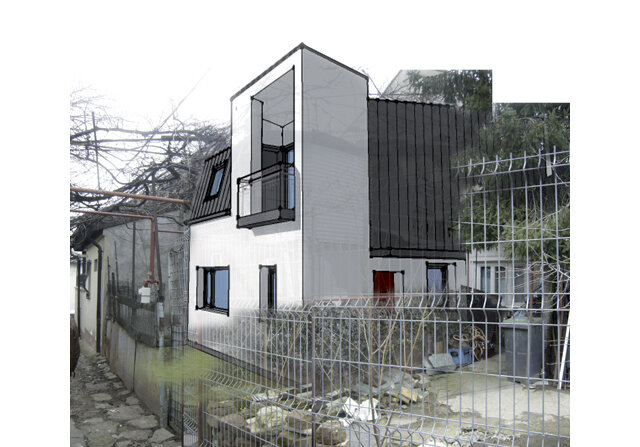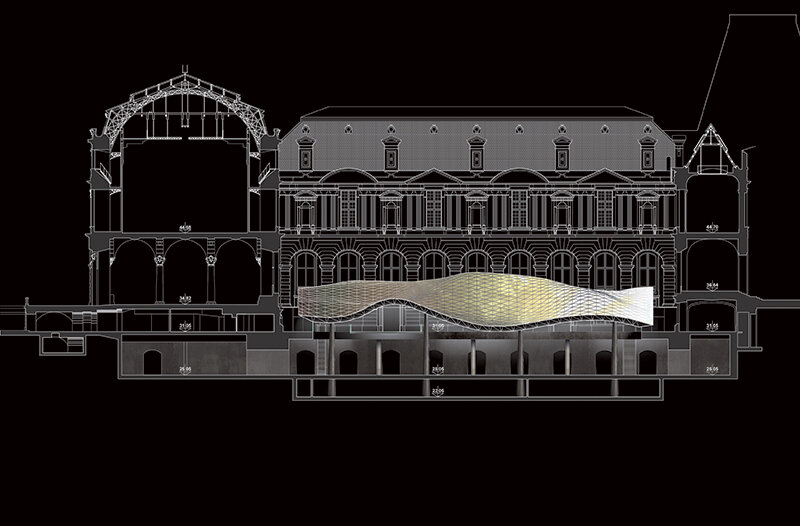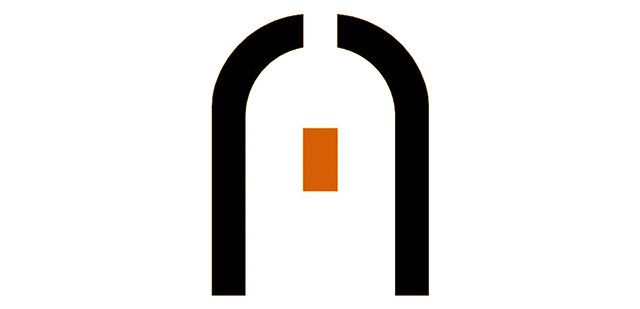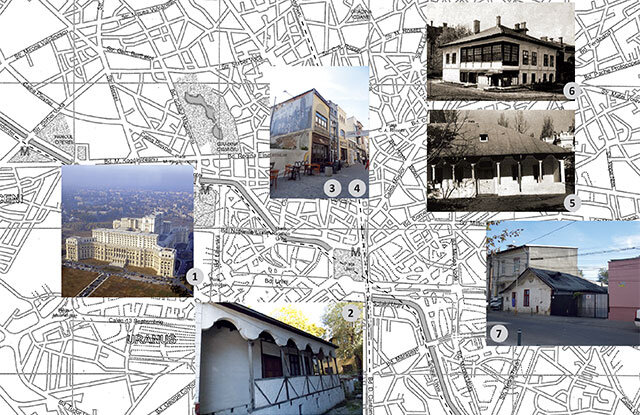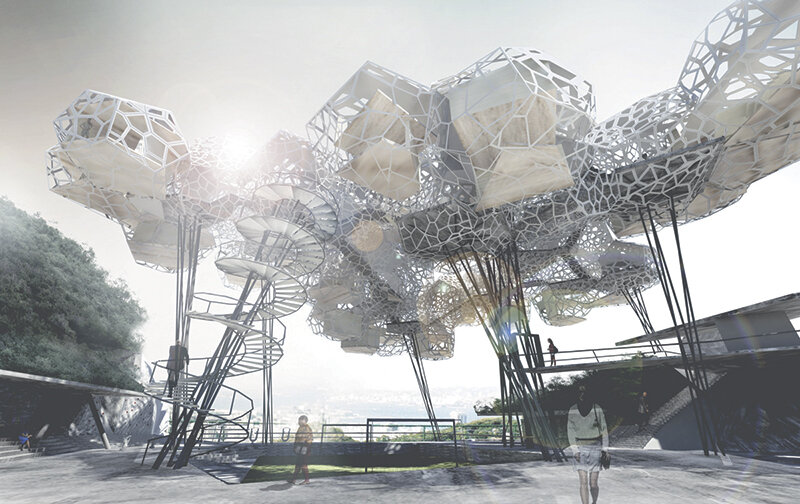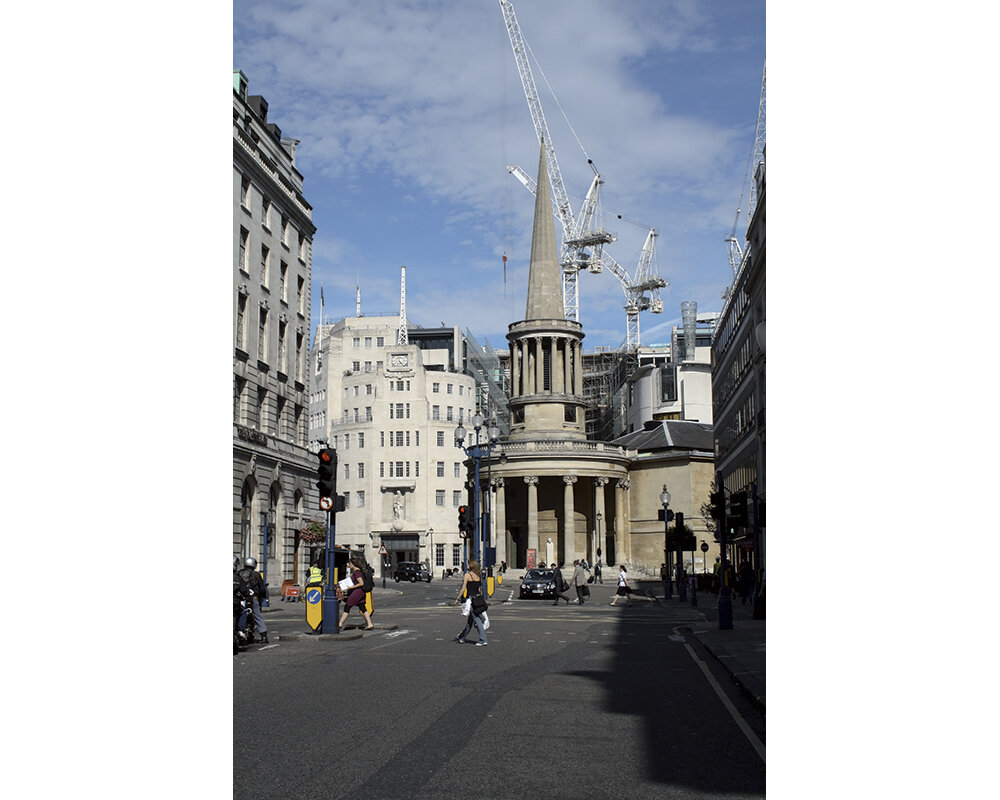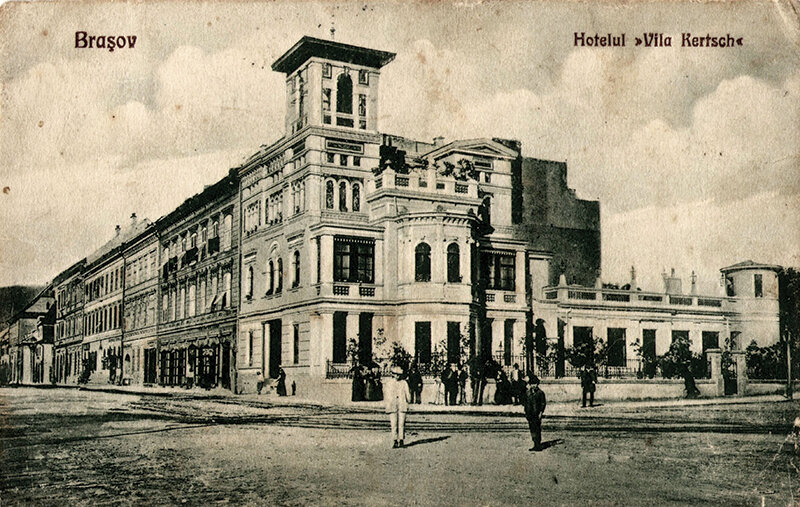
Architecture at maximum (and minimum)
Architecture to the maximum (and minimum)
| 1. Big? An article in Le Monde (April 19, 2005, p. 27) talks about the status - marketable or not - of ancient Greek monuments. The dispute is of less interest here. Far more interesting are two clues the article gives us to the revived desire to familiarize the contemporary world with classicism, in, after all, random sections of it. The first clue tells us of Vodafone's desire to host a dinner for 150 of its leaders in the portico of Attalos in the Athenian Agora. The second clue tells us about Rhodes and the island's mayor's greatest wish, finally realizable thanks to a coincidence. At stake is no more and no less than the reconstruction of the Colossus of Rhodes, which collapsed in 227 BC after an extremely violent earthquake. A blockbuster movie, by the name of Elie Choraqui's O, Jerusalem, due to be filmed there, has reopened the discussion about rebuilding the disaster of more than two millennia ago. The mayor's arguments are sound and have as much to do with local identity as tourist attraction: it's one thing to ferry into a Greek harbor and quite another to do it under the feet of a colossus that was, in its time, one of the wonders of the ancient world. So we have two cases: an ancient monument that exists, or, what is more, has been recently restored, and is coveted as a topos for a dinner party; and then we have the case of a monument whose existence is known for certain, both from texts and from underwater archaeology, but whose absence seems to date from 'yesterday' and should therefore be subject to reconstruction. In both cases we are dealing, for different reasons, with the same relationship of temporal and spatial 'intimacy' with the ancient monument, which may be subject to the imminence of everyday, everyday actions: sheltering for nourishment and repairing for the re-conferral of symbolic status to a community. But the strangest relationship with the past was also proposed to us by Greece, not so long ago, if we are to judge by the standards of what 'yesterday' means there. In order to explain the significance of the contemporary gesture, we in turn have to go back in time to 'yesterday' and read the introduction to one of Vitruvius' architectural books, where the character Deinocrates appears. But until then, a brief detour. Architecture envelops the human being and, like clothing, is most often "tailored" to fit the person inside: god, if it is a temple, and man, if it is a dwelling. Measure is a key word here. Imagine a house for the god? - Ask then to show this: cyclopean masonry, holy of holies, measurelessness and dark absence. At other times, the hippterous temple (without ceiling and roof), Vitruvius tells us, is for the lords of light and of heaven in general, where the cella remains open, for the godly eye to behold itself. Be that as it may, the scale of the altars must be kept in mind: 'for Jupiter and all the other heavenly gods, let them be as high as possible. For Vesta and for the gods of the Earth and Sea, let them be set lower' (Vitruvius, IV, 9: 3-4), so that the god is reflected in the face of his house. This appropriateness of the scale of architecture to its purpose - the 'absolute measure' (Michelis: 1982, 208) - has to do with the measures of the being/body within. But such projects are not the recipe for monstrosity, but the anthropomorphization of the landscape itself, an even more violent hybris. This terraforming - the taking in the desert, the turning upside down of making, here seen as incomplete - has perhaps its most illuminating example in the vision of Deinocrates. He proposed to Alexander that he should sculpt Mount Athos in the form of a statue holding a city on the left and a bowl on the right in which all the waters of the mountain had collected. Such a vision is called by Oechslin, paraphrasing Josef Ponten in his Architektur die nicht gebaut wurde (1925), a "monstrous idea in Babylonian, colossal in Oriental form" (1993: 473). It has generated the most diverse interpretations, from Philarete and Alberti to Fischer von Erlach. A kind of partial, disfigured fulfillment of it can be considered the Colossus of Rhodos, the statues of presidents carved into Mount Rushmore, the Palace of the Soviets and the Volga-Don Canal, with the Stalinist giants overseeing the terraforming of the USSR through the forced labor of political prisoners. We have in Dinocrates' idea an original example of the chills of gigantism that permeate architecture from time to time. Are they paranoid forms of anthropomorphism, or remnants of a time when the earth was inhabited by giants, themselves an aborted project of humanity? Perhaps we need to re-read Rem Koolhas's five theorems on Big-ness to understand how conceptually far the oversizing of architecture has gone, which thus enters the aesthetic regime of the sublime (where, incidentally, had Hegel sent it, with the pyramids as an example?) Here is the fragment of the Vitruvian text in which the voice of Dinocrates breathes: "For I have planned to sculpt Mount Athos in the form of a male statue, placing in its left hand the walls of a huge city, and in its right hand a basin to receive the water of all the rivers of this mountain, so that it may pour from it into the sea" (Vitruvius, II, Preface, 2). From the perspective of the face-body/architecture relationship, gigantism and limitlessness usually declare the will of power to be represented by non-human buildings. Alexander refused Deinocrates' proposal, but his followers would be more wary of similar proposals, had they not challenged them themselves. Now here is the news published by România literară (October 41/16-22, 2002): "A Greek-American foundation has initiated a project to carve a gigantic portrait of Alexander the Great into the side of a mountain in northern Greece. According to its promoters, the 80-meter-high and 57-meter-wide sculpture would "reinforce the Greek character of Macedonia" and attract tourists (the complex, which will cost about €30m, will include a museum, amphitheatre and parking lot). The Hellenic version of Mount Rushmore has official approvals, but not everyone is thrilled (...) archaeologists and environmentalists consider it a monstrosity and are threatening to take it to court. |
| Read the full text in Arhitectura 5/2012. |
| 1. Big? An article in Le Monde (19 April 2005, p. 27) talks about the status of ancient Greek monuments and whether or not they can be commercialized. The arguments are not what interest us here, but rather the two clues that the article provides us about the contemporary world's renascent desire for familiarity with ultimately random sections of the classical world. The first clue is the intention on the part of Vodafone to hold a dinner for 150 of its company leaders in the portico of Attalos in the Athenian Agora. The second clue concerns the Island of Rhodes and the intentions of one of its mayors, which has finally become achievable thanks to a conjunction of circumstances: what is at stake is nothing less than the rebuilding of the Colossus of Rhodes, which was destroyed by a violent earthquake in 227 B.C. Production of a big-budget film by Elie Choraqui, called O, Jerusalem!, due to be shot on Rhodes, has reopened the debate about repairing the disaster of more than two millennia ago. The mayor's arguments are solid and relate both to local identity and to creating a tourist attraction: it is one thing to arrive by ferry in an ordinary Greek port and quite another to dock beneath the legs of a colossus, a recreation of one of the seven wonders of the ancient world. Thus we have two cases: an extant and even recently restored ancient monument, sought after as the topos for a business dinner; and the case of a monument for whose existence there is clear evidence, in the form of both ancient texts and marine archaeology, and whose absence seemingly dates from just "yesterday" and so demands reconstruction. In both cases, but for different reasons, we are dealing with the same relationship of temporal and spatial "intimacy" with an ancient monument, which can be subjected to the immanence of ordinary everyday activities: the setting for a meal and reconstruction with a view to restoring a community's symbolic status. It was also Greece that offered us not so long ago one of the strangest examples of the relationship with the past, if we are to judge by the standards of what "yesterday" means over there. In order to explain the meaning of the contemporary gesture we shall have to go back in time to "yesterday" and read the introduction to one of Vitruvius' books on architecture, the one that mentions Deinocrates. But first let us make a short digression. Architecture envelops being and, like a garment, it is most often "tailored" to fit the measure of the person inside: a god, if it is a temple, or a man, if it is a dwelling. Measure is the keyword here. Are you designing a house for a god? Then you need to display the following: cyclopean masonry, a holy of holies, boundlessness, and tenebrous absence. Sometimes, Vitruvius tells us, the hypethral (roofless) temple is dedicated to the lord of light and the heavens in general, and the cella is open to the sky so that the eye of the god can gaze upon itself. Whatever the temple might be, the scale of the altars needs to be taken into account, so that the god will be reflected in the image of his house: "For Jupiter and all the other heavenly gods they should be as elevated as possible. For Vesta and the gods of the Earth and Sea they should be positioned lower" (Vitruvius, IV, 9, 3-4). This appropriateness of architectural scale ("absolute measure", Michelis: 1982, 208) relates to the measure of the being/body within. However, it is not such designs that represent a recipe for monstrosity, but rather the anthropomorphizing of the landscape itself, a hubris that is all the more violent. Such terraforming - taking creation in vain, against the grain, viewing it as incomplete - probably finds its best illustration in the vision of Deinocrates. He proposed to Alexander that he should carve Mount Athos in the shape of a statue holding a city in its right hand and in its left a bowl that would gather all the mountain's waters. In his Architektur die nicht gebaut wurde (1925), paraphrasing Josef Ponten, Oechslin calls it "an idea Babylonian in its monstrosity, oriental in its vastness" (1993: 473). It has given rise to the most various interpretations, from Filarete and Alberti to Fischer von Erlach. The Colossus of Rhodes, Mount Rushmore, the Palace of the Soviets, and the Volga-Don Canal, with its gigantic Stalins keeping watch over the terraforming of the USSR through the forced labor of political prisoners, may all be regarded as partial, distorted fulfilments of Deinocrates' idea. In that idea we find an original example of the fever for gigantism that periodically grips architecture. Are they paranoid forms of anthropomorphism or the residues of times when the earth was inhabited by giants, themselves an abortive prototype of mankind? Perhaps we should reread Rem Koolhas's five theorems of Bigness in order to understand how far oversized architecture has come, thereby entering the aesthetic realm of the sublime (where else did Hegel refer it, using the pyramids as an example?). Here is the passage from Vitruvius which reproduces the voice of Deinocrates: "For, I planned to carve Mount Athos in the form of a male statue, holding in his left hand the walls of a huge city, and in his right hand a cup to gather the waters of all the mountain's rivers and thence empty them into the sea" (Vitruvius, II, Preface, 2). From the perspective of the body/architecture relation, gigantism and boundlessness usually proclaim the will to be depicted in non-human masonry. Alexander rejected Deinocrates' proposal, but his successors would be more receptive to similar proposals, that is, when they themselves did not prompt them. And now here is an item of news published in Literary Romania (no. 41, 16-22 October 2002): "A Greek-American company has set underway a project to carve a gigantic likeness of Alexander the Great into the slope of a mountain in northern Greece. According to its sponsors, the eighty-metre-metre-high and fifty-seven-metre wide sculpture 'will reinforce the Greekness of Macedonia' and attract tourists (the complex, which will cost around thirty million euros, will include a museum, amphitheatre, and car park). The Hellenic version of Mount Rushmore has been granted official permits, but not everybody is happy... archaeologists and ecologists view it as a monstrosity and are threatening legal action". |
| Read the full text in the print magazine. |

